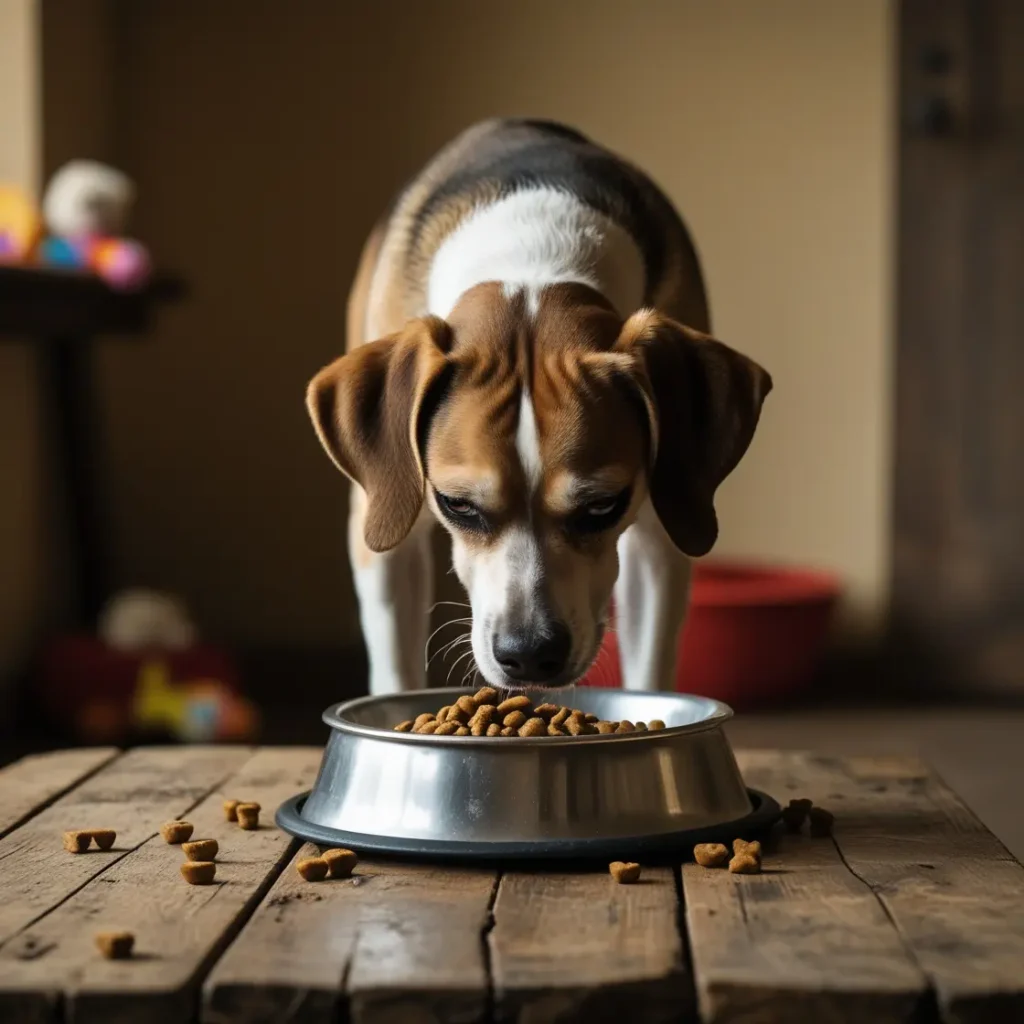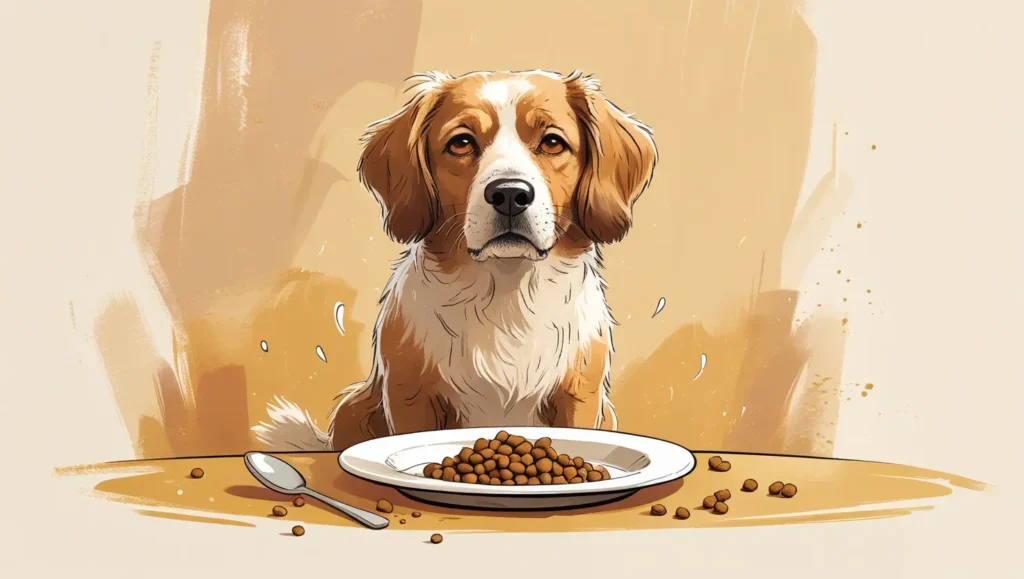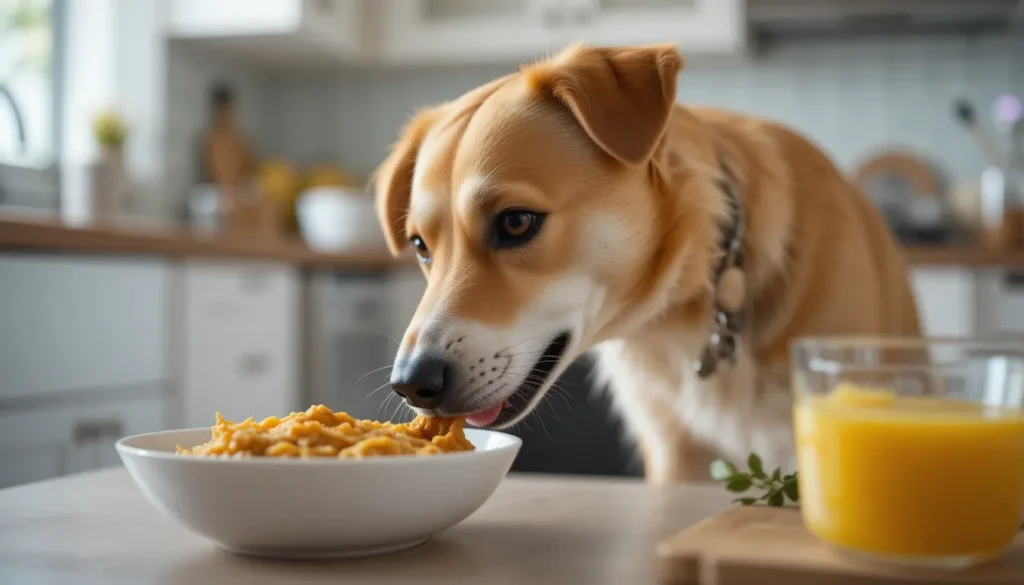Changes in appetite and eating habits in dogs can be alarming for pet owners. It’s essential for owners to be observant and proactive in addressing these changes. In this article, we’ll explore the common reasons why dogs experience alterations in their eating patterns and provide insights on how to recognize, manage, and respond to these behaviors.
Medical Conditions Control Appetite
Gastrointestinal Issues: Dogs with gastrointestinal problems like gastritis, colitis, or inflammatory bowel disease (IBD) experience symptoms like nausea, bloating, diarrhea, or constipation, which contribute to the reduction in their appetite. Some dogs avoid food entirely for these reasons.
Other conditions like acid reflux and pancreatitis cause appetite loss, and digestive upset.
Bill Zollers indicates that, “Dogs may experience loss of appetite due to various medical conditions, which can present as anorexia, hyporexia, or dysrexia.”
Dental Problems: Issues like gum disease (gingivitis), tooth infections, and broken teeth make eating painful. Dogs may chew on one side of their mouth or refuse to eat hard kibble. You might also notice drooling, bad breath, or pawing at their mouth.
Periodontal disease also leads to abscesses or infected gums, which intensify the discomfort and further discourage eating.
Infections: Fever, bacterial and viral infections, or internal parasites lead to loss of appetite in dogs. Infections come with other symptoms such as lethargy, vomiting, diarrhea, or nasal discharge.
Parasitic infections, such as roundworms and hookworms, causes gastrointestinal distress. This causes poor appetite and weight loss.
Kidney Disease: Kidney disease damages kidney’s ability to filter waste and produce urine. Dogs feel nauseous, and experience a reduced appetite. Dehydration and toxic waste buildup further contribute to decreased hunger.
Liver Disease: Liver disease makes dogs feel unwell. This leads to loss of appetite, nausea, and vomiting. Dogs with liver disease have a yellowish tint to their eyes or gums (jaundice), abdominal swelling, or lethargy.
Cancer: Dogs with cancer experience anorexia (loss of appetite) as a side effect. Cancer leads to a general decline in health that reduces interest in food.
Endocrine Disorders: Conditions like diabetes mellitus, hypothyroidism, or Cushing’s disease affect a dog’s metabolism and appetite. Diabetes causes excessive thirst and urination, along with fluctuating appetite.
Dogs with hypothyroidism become lethargic, gain weight, and lose interest in food. Dogs with Cushing’s disease eat excessively but still lose weight.
Pain: Pain from arthritis, joint problems, and internal injuries lead to decreased appetite. Dogs with neurological issues, such as spinal problems or nerve damage, also exhibit changes in eating habits due to difficulty in swallowing food.
Behavioral Factors Change Appetite in Dogs

Stress or Anxiety: Dogs are highly sensitive to their environment. A move to a new home, the addition of a new pet, and changes in the owner’s schedule cause behavioral changes in dogs.
Dogs refuse food when they are anxious. Separation anxiety, fear of loud noises, and being left alone for long periods also suppress appetite.
Depression: Dogs feel depressed due to loss of a family member (human or animal), and a change in the owner’s routine. Depressed dogs exhibit a lack of interest in food, lethargy, and a reduced desire to interact with people and their environment. A depressed dog sleeps more and avoids play and social interaction.
Boredom: Bored dogs become picky eaters. They simply lose interest in eating altogether. Lack of exercise, long periods of isolation, and minimal interaction with family contribute to this.
Changes in Routine: A disruption in their feeding routine lead to decreased appetite. Additionally, a sudden switch in food types and flavors also discourage eating. Even positive changes, like the introduction of new treats and food, cause hesitation.
Dietary Factors and Dog's Appetite
Change in Food: Changes in food brand, flavor, or type impact dogs’ appetite. Dogs are picky eaters and they don’t accustom themselves to new food immediately. Abrupt dietary changes also upset the digestive system.
Overfeeding: Dogs lose interest when given food that’s too high in calories or fat. They lose interest in eating either being full or from an unhealthy diet. Without right balance of nutrients dogs experience digestive problems.
Food Allergies: Some dogs are allergic to certain ingredients like chicken, beef, or grains. When allergic dogs eat these foods, they feel gastrointestinal distress, skin problems, and discomfort. This discomfort results in lack of appetite.
Sensitivities to specific ingredients can cause bloating, gas, diarrhea, or vomiting in dogs.
Age Kills Appetite
Reduced Activity Levels: Dogs activity and appetite lessen according to their ages. Elderly dogs are less interested in food due to arthritis.
Changes in Senses: Aging dogs experience a decline in their senses of taste and smell. Just like older humans, they do not find food as enticing and satisfying as they once did.
Chronic Health Conditions: Senior dogs are more prone to conditions like arthritis, kidney disease, dental issues, and cancer. These diseases affect their appetite.
Dogs Appetite Depends on Environmental Factors
Weather: In hot weather, dogs feel sluggish, and dehydrated. These lessens their appetite. On the other hand, extreme cold also cause a decrease in appetite. These seasonal shifts result in reduced food consumption.
Holidays or Festive Seasons: During the holiday season, families may travel, and guests might be in the home. These factors cause anxiety and stress in dogs. The presence of rich, fatty, and spicy human food also disrupts a dog’s appetite.
Changes in Activity Level
Reduced Activity: Factors like Injury or illness limit a dog’s ability to exercise. Without proper exercise thy can’t burn out energy. In this moment, they require fewer calories. Dogs lose the motivation to eat when in pain or just recovered from surgery.
Dogs need special diet that are easier to digest when recovering from surgery or illness.
Increased Activity: Dogs need more food when their activity level increase. They need more food to replenish the energy they’ve expended.
Pregnancy and Lactation Change Appetite in Dogs
Increased Appetite: Pregnant or nursing dogs require more calories and nutrients to support their growing puppies or milk production. You may notice that a pregnant or lactating dog’s appetite significantly increases, and they might be more interested in food than usual.
Appetite Solutions for Dogs
- Owner behavior and food management play a critical role in appetite management.
- Ensure your dog high-quality food that meets its nutritional needs.
- Try switching to a more palatable option.
- Adding toppers like chicken broth, cooked meat, or specialized dog food toppers.
- Establish a feeding routine can help trigger hunger. Serve meals at the same time each day and remove the food if it’s not eaten within 15-20 minutes. This helps encourage the dog to eat at mealtime.
- For dogs with specific conditions like cancer, a novel, highly palatable, and calorically dense diet can improve caloric intake and maintain body weight.
- Regular exercise stimulates your dog’s appetite.
- Heating the food slightly or serving it at room temperature can enhance its aroma, making it more attractive to your dog.
- Sometimes a lack of appetite is a sign of health problems, including dental issues, gastrointestinal issues, or other medical conditions. If your dog is persistently not eating, consult your vet for a checkup.
- Some supplements, like omega-3 fatty acids (found in fish oil) or vitamin B12, may help increase appetite. However, these should be used under the advice of your veterinarian.
Changes in your dog’s appetite or eating habits should never be ignored. As a responsible pet owner, it’s crucial to observe any shifts in eating patterns, track additional symptoms, and consult a veterinarian if necessary.
By addressing potential issues early and providing the right care, you can ensure your dog’s health and well-being, keeping them happy and thriving for years to come.
Reference:
- Bill Zollers, Linda Rhodes & Ernst Heinen. Capromorelin oral solution (ENTYCE®) increases food consumption and body weight when administered for 4 consecutive days to healthy adult Beagle dogs in a randomized, masked, placebo controlled study. BMC Veterinary Research.
- Reshma M. Anthony, Madison D. Amundson, J. Brejda. Acceptance of a Novel, Highly Palatable, Calorically Dense, and Nutritionally Complete Diet in Dogs with Benign and Malignant Tumors.




